95% CI (143, 616) Steps in SPSS Use Analyze Descriptive statistics Crosstabs to produce aThe relative risk is best estimated using a population sample, but if the rare disease assumption holds, the odds ratio is a good approximation to the relative risk — the odds is p / (1 − p), so when p moves towards zero, 1 − p moves towards 1, meaning that the odds approaches the risk, and the odds ratio approaches the relative riskHow to Interpret Odd Ratios when a Categorical Predictor Variable has More than Two Levels;
Research Statistics Basics Contents 1 Basic Concepts 2 References Basic Concepts Null Hypothesis The Hypothesis That The Independent Variable Has No Effect On The Dependent Variable For Example Steroids Do Not Improve Outcomes In Ards Would Be
Odds vs risk statistics
Odds vs risk statistics-Odds ratios are used to compare the relative odds of the occurrence of the outcome of interest (eg disease or disorder), given exposure to the variable of interest (eg health characteristic, aspect of medical history) The odds ratio can also be used to determine whether a particular exposure is a risk factor for a particular outcome, and to compare the magnitude of various riskOf OR values less than 1 indicate that lower odds of the outcome are attributed by the exposure;



A Odds Ratio With Corresponding 95 Confidence Intervals For Download Scientific Diagram
Knowing the odds is the first step in beating them But, not all risks faced in life can be accurately estimated Many people would like to know their odds of dying in the current COVID19 pandemic Please see the infographic to understand why odds of dying estimates are not yet available To explore current COVID19 case and fatality trends in the United States please visit theIn epidemiological terms, the odds ratio is used as a point estimate of the relative risk in retrospective studies Odds ratio is the key statistic for most casecontrol studies In prospective studies, Attributable risk or risk difference is used to quantify risk in the exposed group that is attributable to the exposure In retrospective studies, attributable risk can not be calculated · Odds ratio vs relative risk Odds ratios and relative risks are interpreted in much the same way and if and are much less than and then the odds ratio will be almost the same as the relative risk In some sense the relative risk is a more intuitive measure of effect size Note that the choice is only for prospective studies were the distinction becomes important in cases of medium
· In addition, like a risk ratio, odds ratios do not follow a normal distribution, so we use the lo g transformation to promote normality As a result, the procedure for computing a confidence interval for an odds ratio is a two step procedure in which we first generate a confidence interval for Ln(OR) and then take the antilog of the upper and lower limits of the confidence interval for · The risk or odds ratio is the risk or odds in the exposed group divided by the risk or odds in the control group A risk or odds ratio = 1 indicates no difference between the groups A risk or odds ratio > 1 indicates a heightened probability of the outcome in the treatment group The two metrics track each other, but are not equal · Risk vs odds The terms 'risk' and 'odds' are often used interchangeably but they actually have quite different implications and are calculated in different ways Odds is a concept that is very familiar to gamblers It is a ratio of probability that a particular event will occur and can be any number between zero and infinity
And of OR values greater than 1 indicated that higher odds of the outcome are attributed by the exposure OR can be used to assess if a particular treatment is considered a 'risk factor' for a particularLastly, we have to take into account that odds (unlike risks) are rather difficult to understand, particularly for readers that are not particularly trained in statistics The risk of an event is a very simple concept it is the ratio between the number of subjects who experience the event and the total number of subjects at risk It is classically expressed as a proportion ranging between 0 · odds ratio is not as intuitive as relative risk;


Research Statistics Basics Contents 1 Basic Concepts 2 References Basic Concepts Null Hypothesis The Hypothesis That The Independent Variable Has No Effect On The Dependent Variable For Example Steroids Do Not Improve Outcomes In Ards Would Be



Risk Differences And Rate Differences
It is called that because it is the ratio of two odds Some people call the odds the odds ratio because the odds itself is a ratio That is fine English, but this can quickly lead to confusion If you did that, you would have to call this calculation the odds ratio ratio or the ratio of the odds ratios · Risk Difference, Risk Ratio, Odds Ratio, ChiSquared test for 2 x 2 table, Exact test for small samples Numerical outcome variable in two exposure groups Comparison of two means Normal distribution ztest (large sample sizes) or Ttest (small sample sizes) · Risk ratios, odds ratios, and hazard ratios are three ubiquitous statistical measures in clinical research, yet are often misused or misunderstood in their interpretation of a study's results A 01 paper looking at the use of odds ratios in obstetrics and gynecology research reported 26% of studies (N = 151) misinterpreted odds ratios as risk ratios , while a 12 paper found similar



Definition And Calculation Of Odds Ratio Relative Risk Stomp On Step1
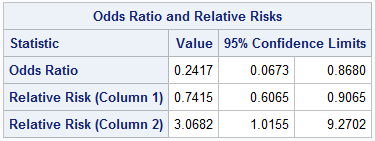


Statistics Basics Odds Ratio And Relative Risk Calculation In Excel Bi Practice
· The math underlying odds and gambling can help determine whether a wager is worth pursuing The first thing to understand is that there are three distinct types of oddsRelative Risk and Odds Ratio for the obese 3) Overall, you can see that decreasing the baseline incidence will decrease the odds ratio (300 in those who are nonobese versus 129 in those who are obese) Obviously, these results run counter to expected results, putting the onus on the researcher to justify them Similarly, you should find that increasing the incidence will increase the oddsUsed in logistic regression;



Cureus What S The Risk Differentiating Risk Ratios Odds Ratios And Hazard Ratios
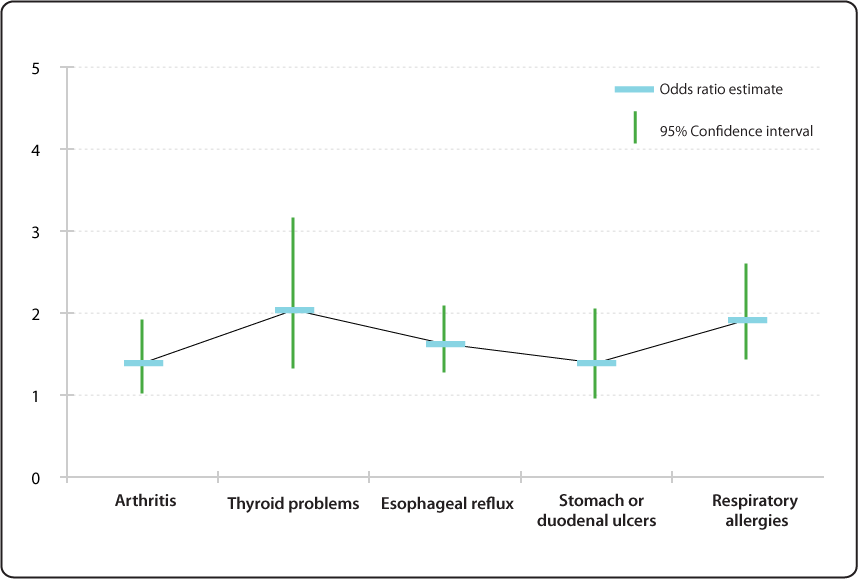


Relative Risk Odds Ratio Estimate With 95 Confidence Intervals For People To 66 Years Of Age And With Selected Conditions Ever Having Voice Problems Or Disorders Nidcd
When RR > 1, OR > 1;Must be used in casecontrol studies rather than relative risk (RR) as there is no information on the numbers of all exposed and nonexposed ;Differences Relative risk and odds ratio can



Pdf Statistical Notes For Clinical Researchers Risk Difference Risk Ratio And Odds Ratio
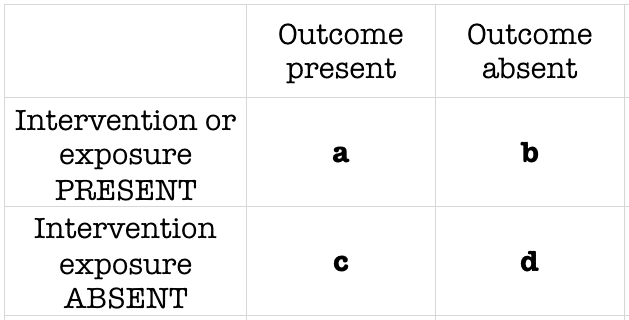


Odds Ratio Litfl Ccc Research
· In statistics, there's also an odds ratio, which calculates the odds for two linked propertiesThe formula is slightly different, because it has to account for two events happening/not happening instead of one OR = (a/c) / (b/d) Odds, Probability, Chance Example Odds are derived from a probability as follows (Boston University) If the probability of an event is 08 (ie an 80% · The risk of failure for SF was 96/351 vs 32/350 with HP Let's convert this to odds SF 96/ = 0376 odds HP 32/ = 010 odds The OR is 0376/010 = 37 Note, the OR overestimates the RR, which was 3 Although one could say the risk of failure using SF is 3 times greater than HP, one could not say, based on the OR, the risk was 374 times greater The ORAnd a risk of 095 is equivalent to odds of 19



Calculate Relative Risk With 95 Confidence Intervals



Tutorial About Hazard Ratios Students 4 Best Evidence
· Definition The Odds Ratio is a measure of association which compares the odds of disease of those exposed to the odds of disease those unexposed Formulae OR = (odds of disease in exposed) / (odds of disease in the nonexposed) Example I often think food poisoning is a good scenario to consider when interpretting ORs Imagine a group of friends went out toWhen events are common, as is often the case in clinical trials, the differences between odds and risks are large For example, a risk of 05 is equivalent to an odds of 1;Not all readers know how these statistics are derived and interpreted, nor are all readers aware of their strengths and limitations This article examines several measures, including absolute risk, attributable risk, attributable risk percent, population attributable risk percent, relative risk, odds, odds ratio, and others The concept and method of calculation are explained for each of these



Statistics Part 13 Measuring Association Between Categorical Data Relative Risk Odds Ratio Attributable Risk Logistic Regression Data Lab Bangladesh
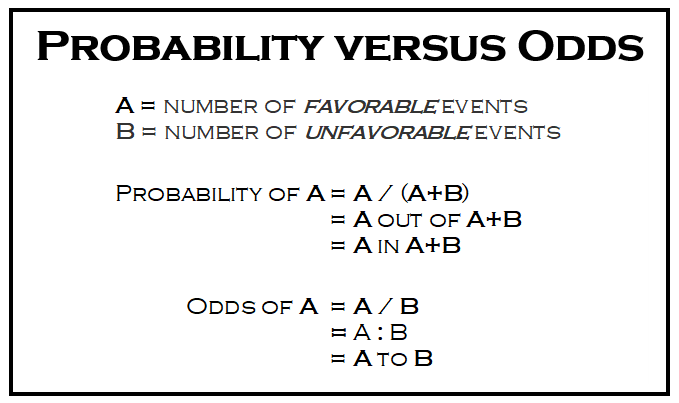


What Are The Odds Stats With Cats Blog
Pretend there is a drawing with one winner and 10,000 people entered The odds of winning are 1/9,999 () and the probability of winning is 1/10,000 () In this case, odds and probability are essentially identical Relative Risk (RR) & Odds Ratio (OR) · Comparing AstraZeneca vaccine bloodclot risk to odds of dying in a car crash unhelpful, experts say Downplaying the risk with inappropriate comparisons will not build coronavirus vaccineWhen RR < 1, OR < 1;



Solved Look At Slide 25 In The Descriptive And Inferent Chegg Com
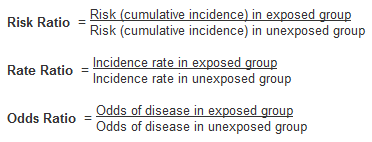


Numerators Denominators And Populations At Risk Health Knowledge
Reader Interactions Comments Stefan says November 19, 18 at 635 am · Wasserstein earned his masters and PhD degrees in statistics from Kansas State University He is a Fellow of the American Statistical Association and of the American Association for the Advancement of Science 6 Comments James P Scanlan on January 8, 15 at 738 am Neither the relative risk nor the odds ratio is a sound measure of the strength of associationThe relative risk and the odds ratio are measures of association between exposure status and disease outcome in a population Relative risk In epidemiology, relative risk (RR) can give us insights in how much more likely an exposed group is to develop a certain disease in comparison to a nonexposed group Once we know the exposure and disease status of a research population,



Bi Practice Page 4 A Journey Of A Thousand Miles Begins With The First Step



Forest Plot Showing Relative Statistics Of Odds Ratio A And B Or Download Scientific Diagram
· Statistically speaking, the only way to compare this fairly is to compare the risk of contracting COVID19 and then dying from COVID19 to the risk presented from the J&J vaccine as we currently know it To accomplish this, we took the total US COVID19 deaths by each age group and divided by the population in the US in that particular age group · The difference between odds ratio and risk ratio While Risk Ratio is the probability of one thing divided by the probability of another (usually in a separated group), Odds Ratio is the odds of one event happening divided by the odds of another EssoeOdds1 Back to the Superbowl example, the relative odds of being hungover today, associated with being a Seahawks fanAn OR value of 1 indicates no effect on the odds from the exposure to the outcome;



Pdf Statistical Notes For Clinical Researchers Risk Difference Risk Ratio And Odds Ratio



Statistics Basics Odds Ratio And Relative Risk Calculation In Excel Bi Practice
USE OF ODDS RATIO odds ratio gives an indication of the strength of association between groups commonly used in metaanalysis;The odds ratio The probability or risk of an event is the number experiencing the event divided by the number who could experience it The odds of an event is the number experiencing the event divided by the number who do not experience it For example, the risk of cough for a child with a history of bronchitis = 26/273, the odds of cough for a child with a history of bronchitis =Relative risk vs Odds ratio Similarities They will always agree on the direction of comparison In our example above, both will agree that wine consumers have less heart disease than nonconsumers;



What Is An Odds Ratio And How Do I Interpret It Critical Appraisal


Risk Of Death By Age And Sex
Odds ratios (OR) are commonly reported in the medical literature as the measure of association between exposure and outcome However, it is relative risk that people more intuitively understand as a measure of association Relative risk can be directly determined in a cohort study by calculating a risk ratio (RR)Odds The National Safety Council compiled an oddsofdying table for 08, which further illustrates the relative risks of flying and driving safety It calculated the odds of dying in a motor"Odds" and "Risk" are the most common terms which are used as measures of association between variables In this article, which is the fourth in the series of common pitfalls in statis Common pitfalls in statistical analysis Odds versus risk Perspect Clin Res OctDec 15;6(4)2224 doi / Authors Priya Ranganathan 1 , Rakesh Aggarwal 2 , C S Pramesh 3



How Much Normal Risk Does Covid Represent By David Spiegelhalter Wintoncentre Medium


Relative Risk Ratios And Odds Ratios
Odds ratio and relative riskWhen RR = 1, OR = 1; · Calculation of probability (risk) vs odds In statistics, odds are an expression of relative probabilities, generally quoted as the odds in favor The odds (in favor) of an event or a proposition is the ratio of the probability that the event will



Risk Ratio Vs Odds Ratio



How To Interpret And Use A Relative Risk And An Odds Ratio Youtube
The smaller the risk of the disease is in both groups, the closer the OR is to the RR ; · Brentford vs Swansea Prediction, Statistics, Preview & Betting Tips Tom Love 0942 Friday 28th May 21 Brentford vs Swansea prediction & betting tips brought to you by football expert Tom Love Saturday 1500 See All Odds Brentford vs Swansea Stats Swansea have the 3rd best away record this season, losing just 7/24 games Swansea have seen under 25CALCULATION the odds of the



Odds Ratio Http Www Slideshare Net Terryshaneyfelt7 What Does An Odds Ratio Or Relative Risk Mean Research Methods Academic Research Statistics Math


Introduction To Genetic Epidemiology Lesson 5 Analyzing The Data
· Probability and odds measure the same thing the likelihood or propensity of a specific outcome The Difference Between Relative Risk and Odds Ratios;Relative risk, the odds ratio is said to be significant if the confidence interval does not include 1 In this example the upper and lower limit of the 95% CI are both greater than 1 so the odds of death are said to be significantly higher in the control group and the result is reported as OR 3; · Odds Ratio is the odds that the diseased group was exposed, divided by odds that the nondiseased group was exposed (a/c)/(b/d) in the classic table Relative Risk is the risk of developing disease in the exposed/intervention group, that is to say the odds of disease in the intervention arm divided by the odds of disease in the placebo arm (which is what is described
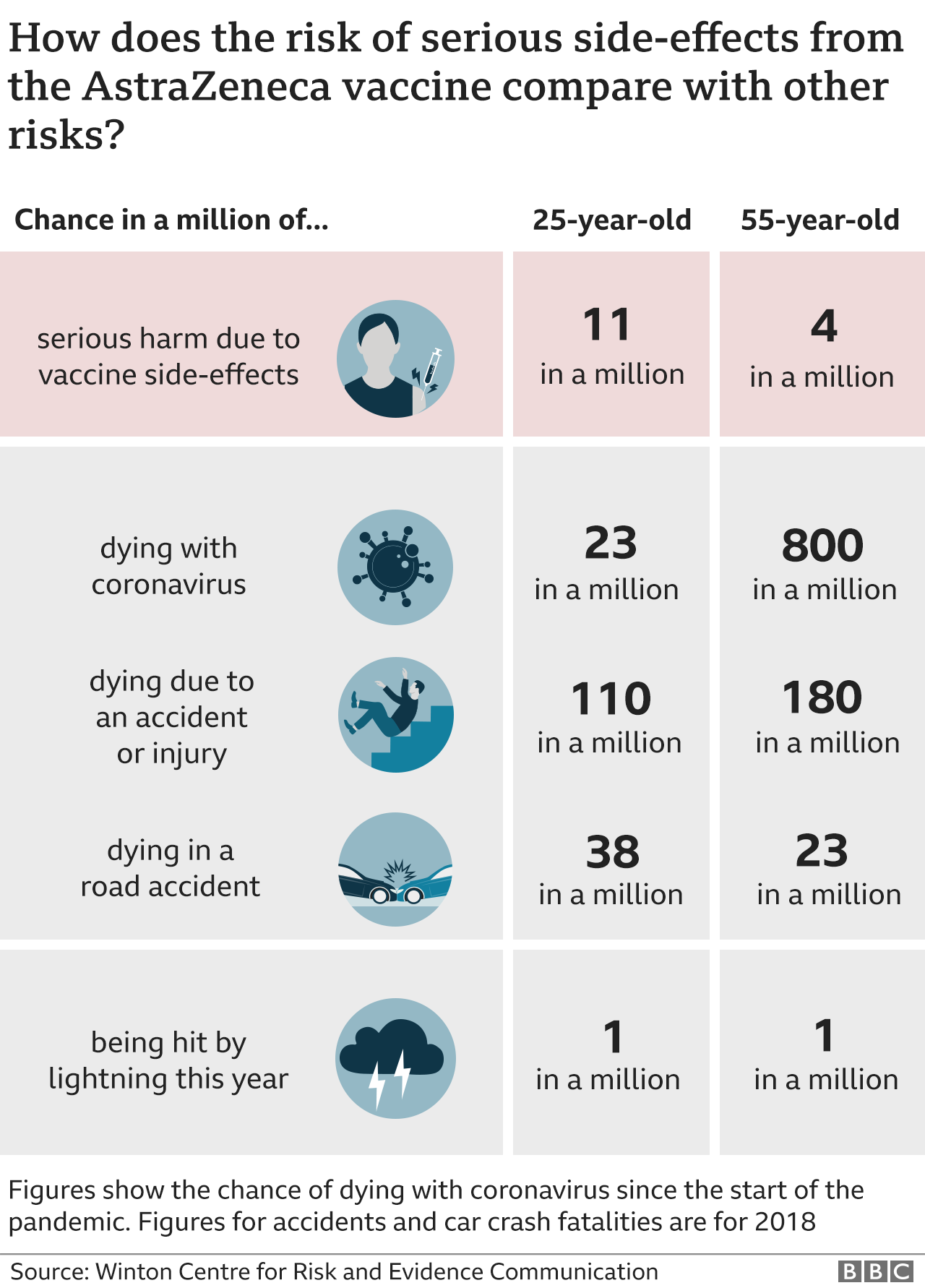


Astrazeneca Vaccine How Do You Weigh Up The Risks And Benefits c News


College Statistics Sas Interpretation Relative Risk Odds Ratio Homeworkhelp
· The odds ratio will be greater than the relative risk if the relative risk is greater than one and less than the relative risk otherwise In the example above, if the adjusted odds ratio were interpreted as a relative risk, it would suggest that the risk of antibiotic associated diarrhoea is reduced by 75% for the intervention relative to the placebo group However, this wouldEffect Size Statistics in Logistic Regression; · The basic difference is that the odds ratio is a ratio of two odds (yep, it's that obvious) whereas the relative risk is a ratio of two probabilities (The relative risk is also called the risk ratio) Let's look at an example Relative Risk/Risk Ratio Suppose you have a school that wants to test out a new tutoring program At the start of
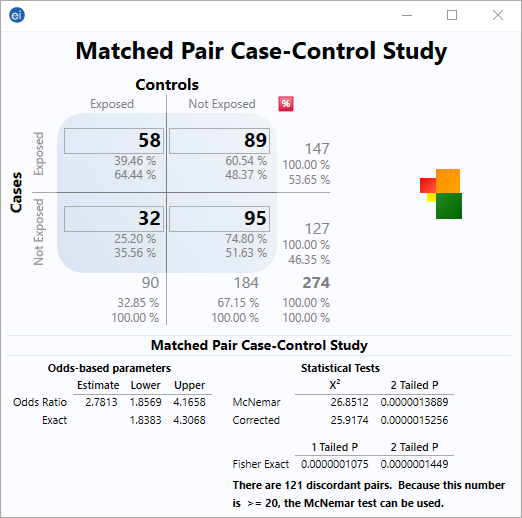


Matched Pair Case Control Statcalc User Guide Support Epi Info Cdc



When Can Odds Ratios Mislead The Bmj
About Press Copyright Contact us Creators Advertise Developers Terms Privacy Policy & Safety How works Test new features Press Copyright Contact us Creators · A crude odds ratio can be converted to a crude risk ratio risk ratio = odds ratio/(1 − p0) (p0 × odds ratio), in which p0 is the outcome prevalence (risk) among the unexposed Some have applied this formula to an adjusted odds ratio to obtain an adjusted risk ratio 49 This method can produce biased risk ratios and incorrect confidence intervals 26 , 32 , 41 , 50 52If the disease condition (event) is rare, then the odds ratio and relative risk may be comparable, but the odds ratio will overestimate the risk if the disease is more common In such cases, the odds ratio should be avoided, and the relative risk will be a more accurate estimation of risk Absolute risk is the actual risk of some event happening given the current exposure For example, if 1 in



A Odds Ratio With Corresponding 95 Confidence Intervals For Download Scientific Diagram


Risk Of Death By Age And Sex
This is called the odds ratio; · Statistics — Probability vs Odds 📅 September 19, 14 Probability and odds are two basic statistic terms to describe the likeliness that an event will occur They are often used interchangeably in causal conversation or even in published material However, they are not mathematically equivalent because they are looking at likeliness in different contexts In
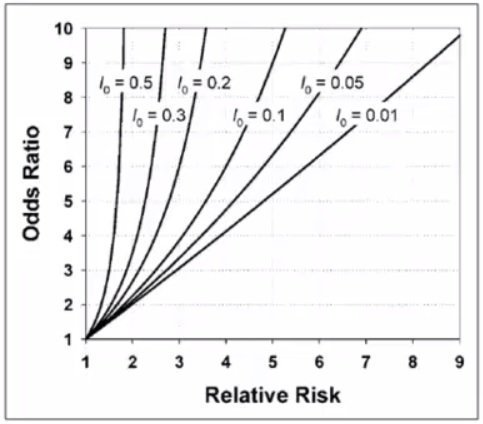


Cecile Janssens A Reminder That Odds Ratios Massively Overestimate Relative Risks When Outcome Is Common In The Population Or By Study Design E G Case Control Studies Io Is Proportion Of Cases
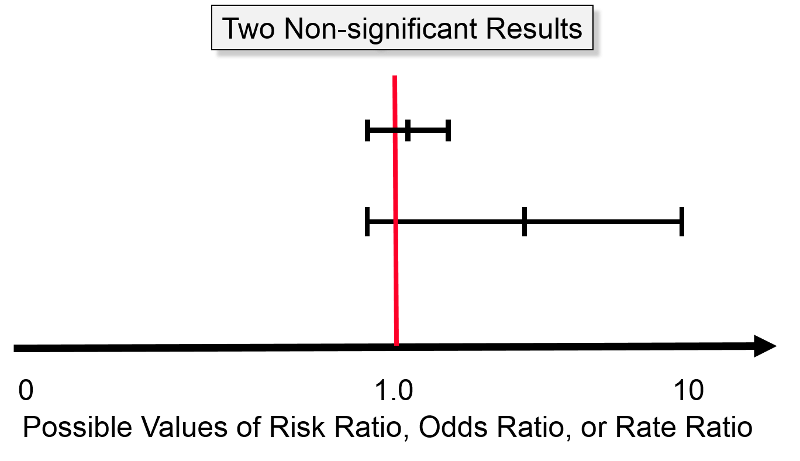


Confidence Intervals And P Values
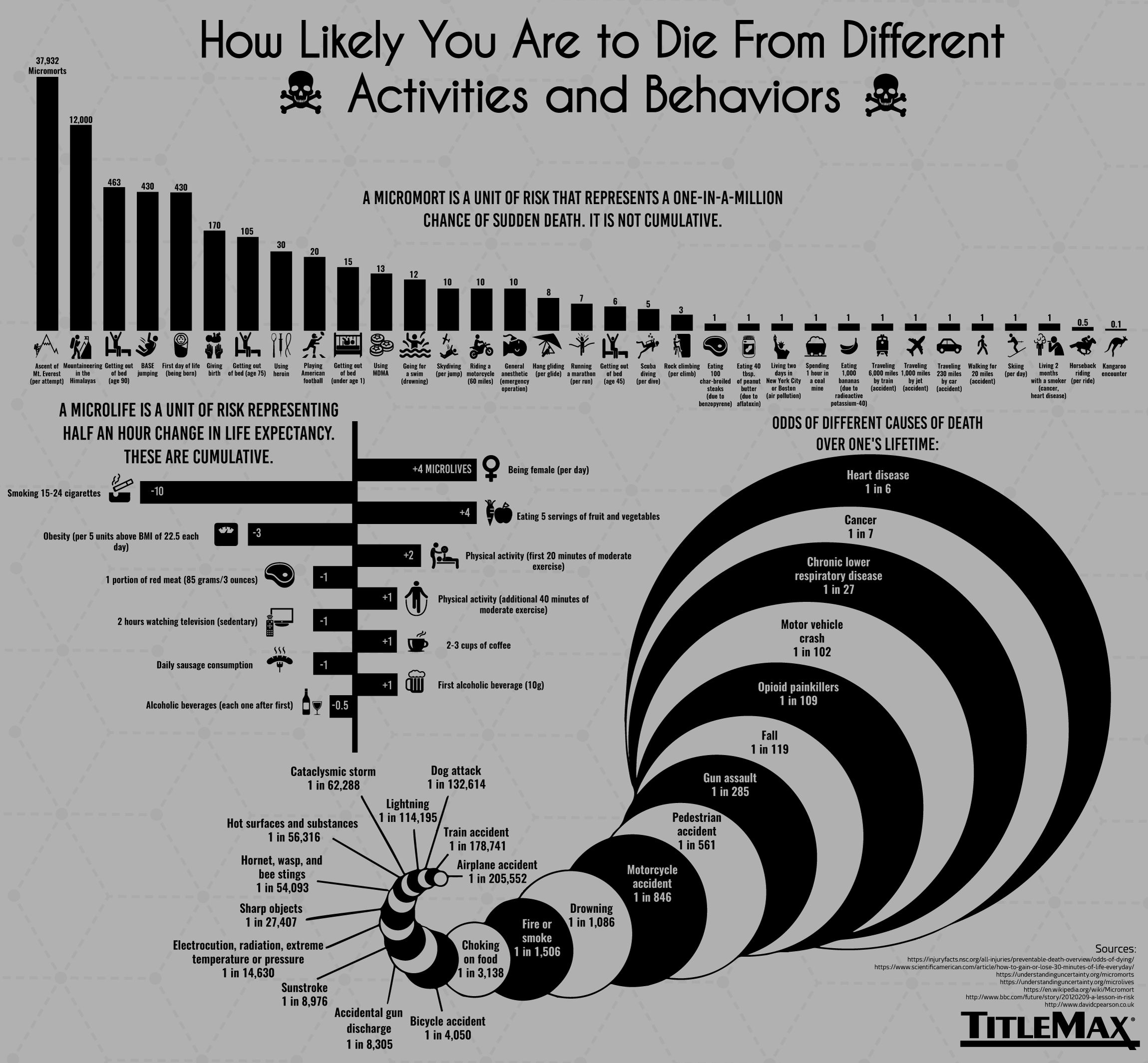


How Likely You Are To Die From Different Activities And Behaviors Infographic Article



Medical Statistics Ix Bias Relative Risk And Odds Ratio Youtube
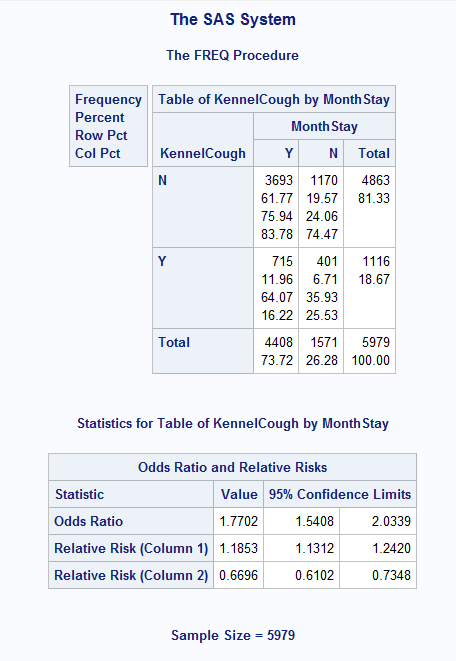


Different Odds Ratio From Proc Freq Proc Logisti Sas Support Communities


Odds Vs Risk Vantage Research



The Difference Between Relative Risk And Odds Ratios The Analysis Factor


Confluence Mobile Wiki Ucsf



Odds Ratio Wikipedia
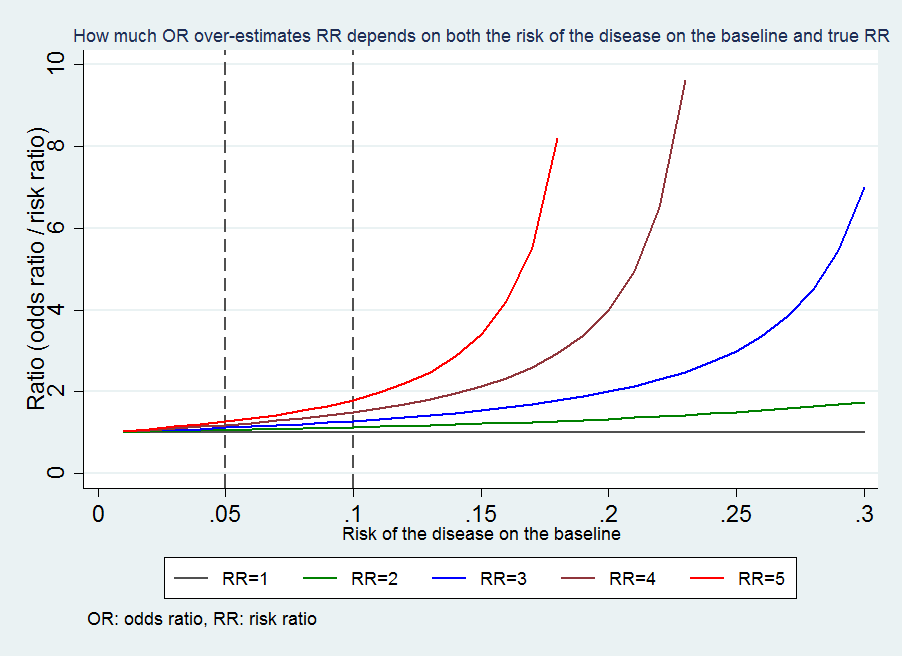


Medical Statistics And Data Science Statistics



Rr Interpretation Http Www Slideshare Net Terryshaneyfelt7 What Does An Odds Ratio Or Relative Risk Mean Nursing Research Research Methods School Hacks
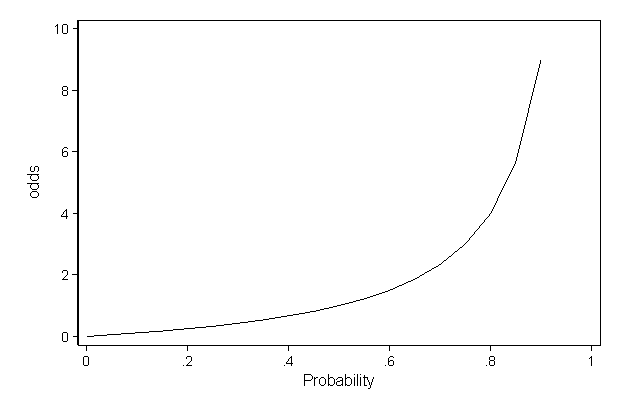


Faq How Do I Interpret Odds Ratios In Logistic Regression



Medical Statistics And Data Science Statistics



Cureus What S The Risk Differentiating Risk Ratios Odds Ratios And Hazard Ratios



Chapter 10 Chi Square Test Relative Risk Odds Ratios



Measures Of Effect Relative Risks Odds Ratios Risk Difference And Number Needed To Treat Sciencedirect



A Beginner S Guide To Interpreting Odds Ratios Confidence Intervals And P Values Students 4 Best Evidence



How To Calculate Odds Ratio And Relative Risk In Excel Statology
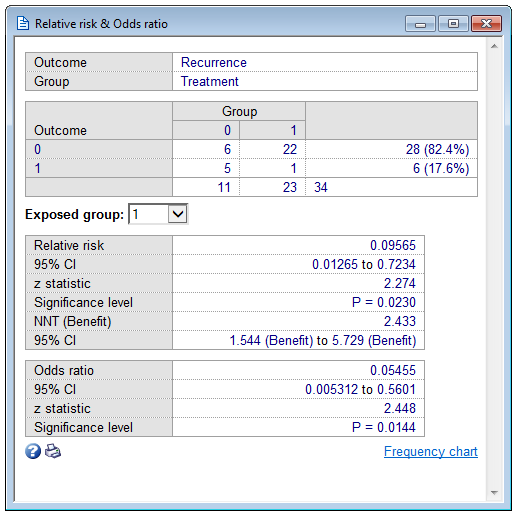


Relative Risk Odds Ratio
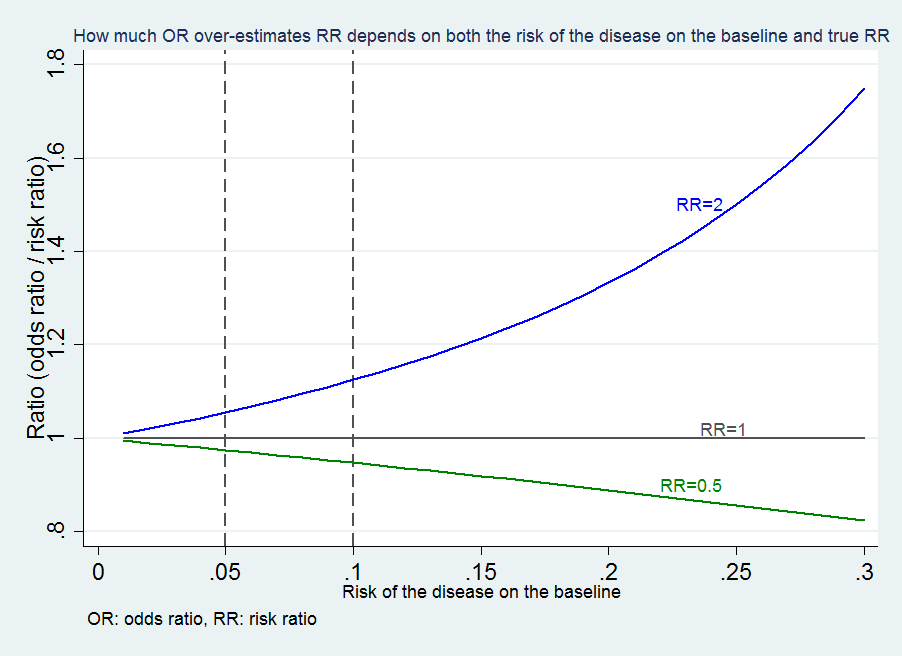


Medical Statistics And Data Science Statistics



Measures Of Effect Relative Risks Odds Ratios Risk Difference And Number Needed To Treat Sciencedirect



Odds Ratio Wikipedia



Relative Risks And Odds Ratios What S The Difference Mdedge Family Medicine
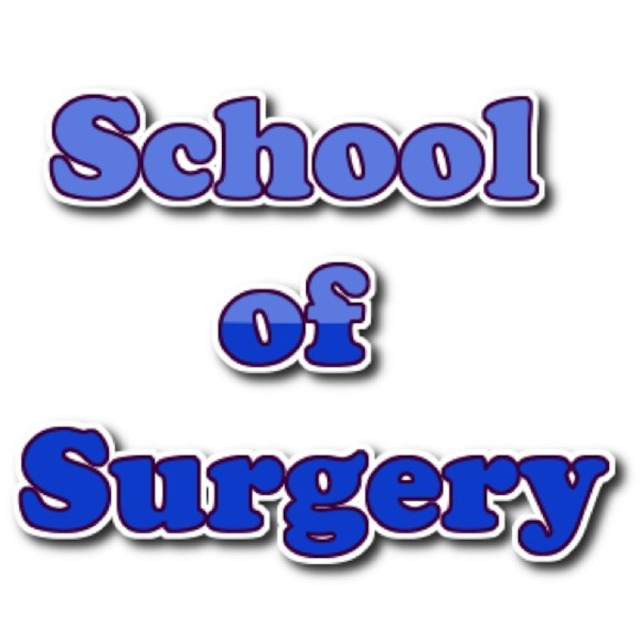


Medical Statistics Ix Bias Relative Risk And Odds Ratio



Statquest Odds Ratios And Log Odds Ratios Clearly Explained Youtube



Pdf Relative Risks Versus Odds Ratios



Odds Ratio Wikipedia



Relative Risk Wikipedia



Pdf What S The Risk Differentiating Risk Ratios Odds Ratios And Hazard Ratios



Medical Statistics And Data Science Statistics



Odds Ratio Relative Risk Risk Difference Statistics Tutorial 30 Marinstatslectures Youtube Study Skills Statistics Tutorial


Introduction To Genetic Epidemiology Lesson 5 Analyzing The Data


Orr Objective Response Rate And Related Statistics Part 2 Odds Ratio



Relative Risk Odds Ratios Youtube



Relative Risk And Absolute Risk Definition And Examples Statistics How To



Statistics Part 13 Measuring Association Between Categorical Data Relative Risk Odds Ratio Attributable Risk Logistic Regression Data Lab Bangladesh



Understanding Systematic Reviews And Meta Analysis Archives Of Disease In Childhood



Against All Odds How To Visualise Odds Ratios To Non Expert Audiences Henry Lau
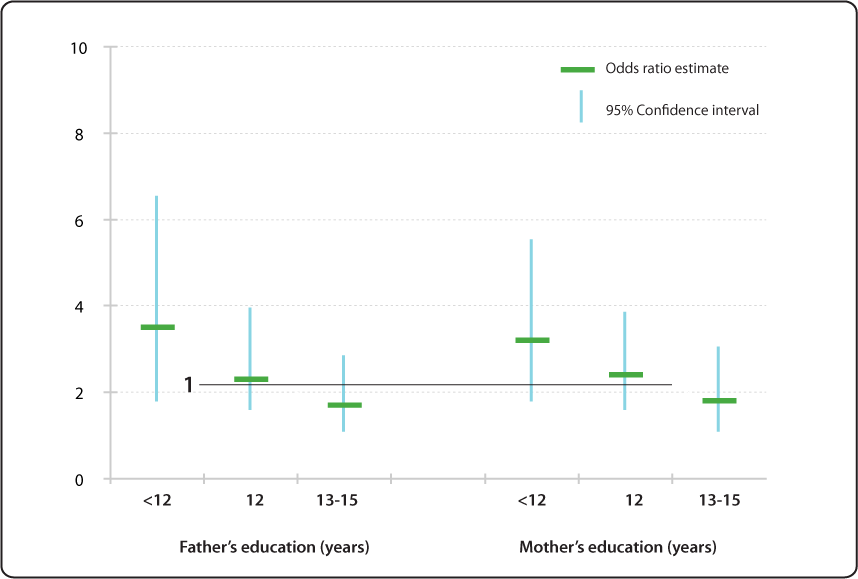


Relative Risk Odds Ratio Estimate With 95 Confidence Intervals Of Children Having Specific Language Impairment Sli By Parent S Level Of Education Reference College Graduate Or More Education 16 Years Nidcd



Risks Of And Risk Factors For Covid 19 Disease In People With Diabetes A Cohort Study Of The Total Population Of Scotland The Lancet Diabetes Endocrinology



Tutorial About Hazard Ratios Students 4 Best Evidence



A Beginner S Guide To Interpreting Odds Ratios Confidence Intervals And P Values Students 4 Best Evidence



Statistics In Medicine Calculating Confidence Intervals For Relative Risks Odds Ratios And Standardised Ratios And Rates The Bmj



The Binomial Applied Absolute And Relative Risks Chisquare



Odds Ratio Relative Risk Risk Difference Statistics Tutorial 30 Marinstatslectures Youtube



What Is An Odds Ratio And How Do I Interpret It Critical Appraisal



Using Odds Ratio In Case Control Studies Youtube



Solved Look At Slide 25 In The Descriptive And Inferentia Chegg Com



Hsrp 734 Advanced Statistical Methods June 5 Ppt Video Online Download



Chapter 6 Choosing Effect Measures And Computing Estimates Of Effect Cochrane Training


Definition And Calculation Of Odds Ratio Relative Risk Stomp On Step1
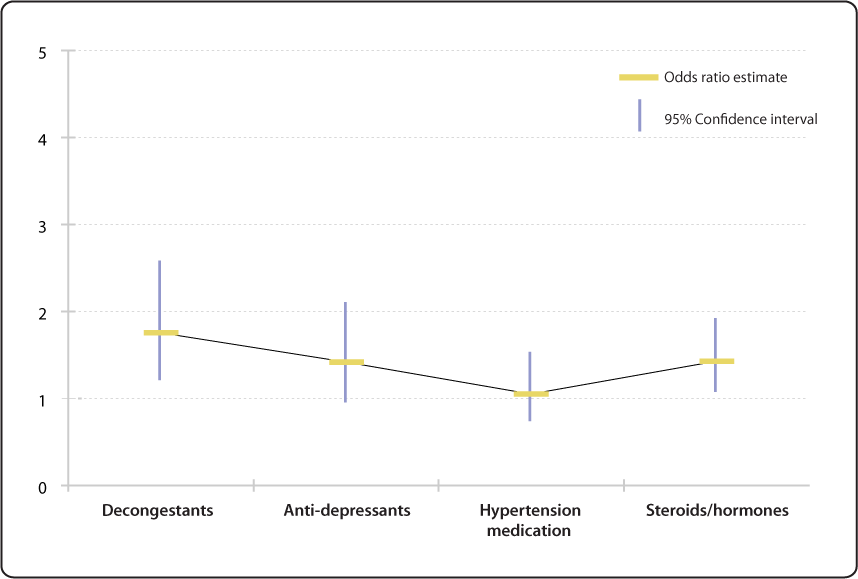


Relative Risk Odds Ratio Estimate With 95 Confidence Intervals For People To 66 Years Of Age With Current Medication Use Ever Having Voice Problems Or Disorders Nidcd



Box 9 2 A Calculation Of Rr Or And Rd
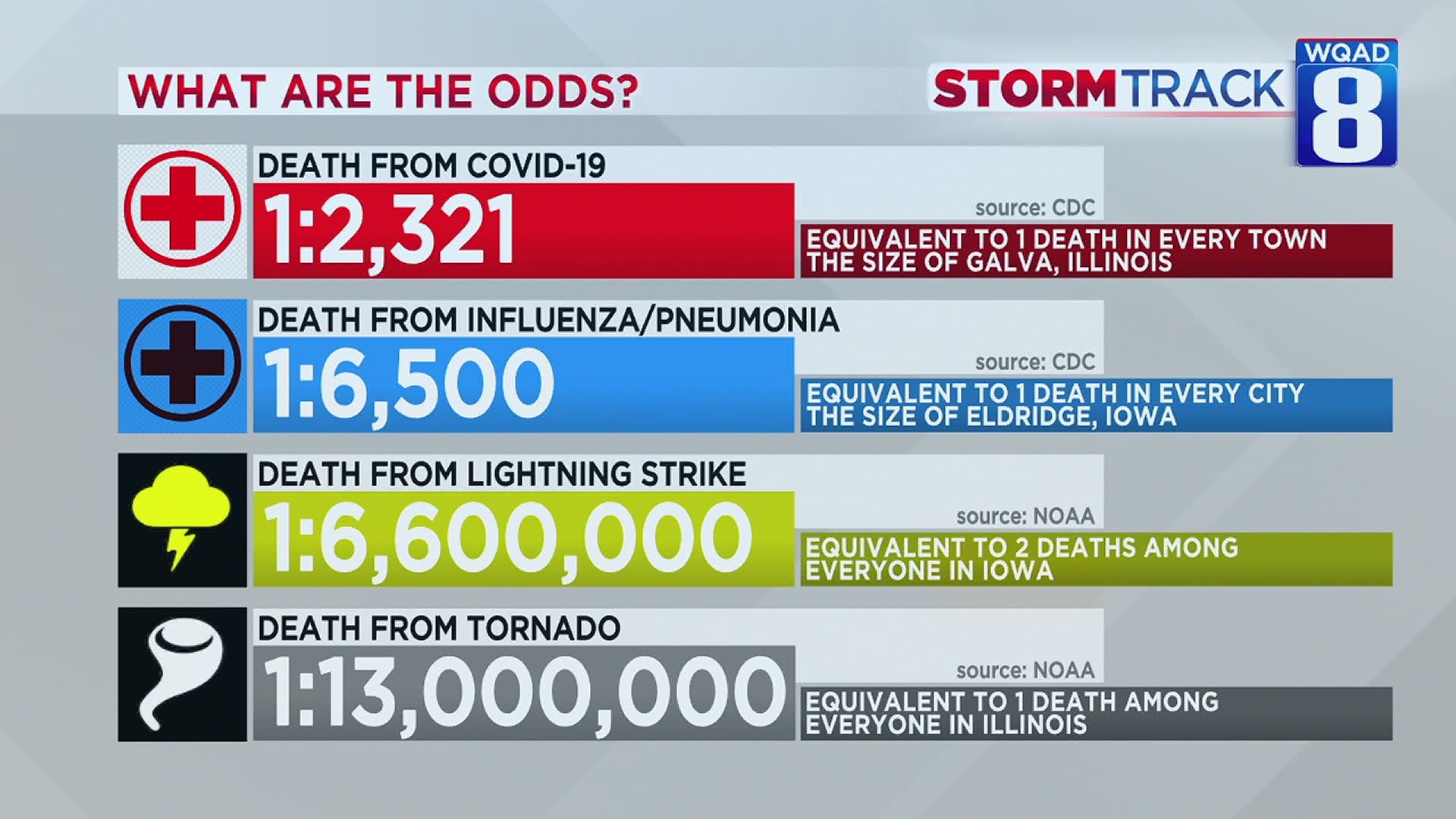


What Are The Odds Of Dying From Covid 19 Vs Lightning Wqad Com
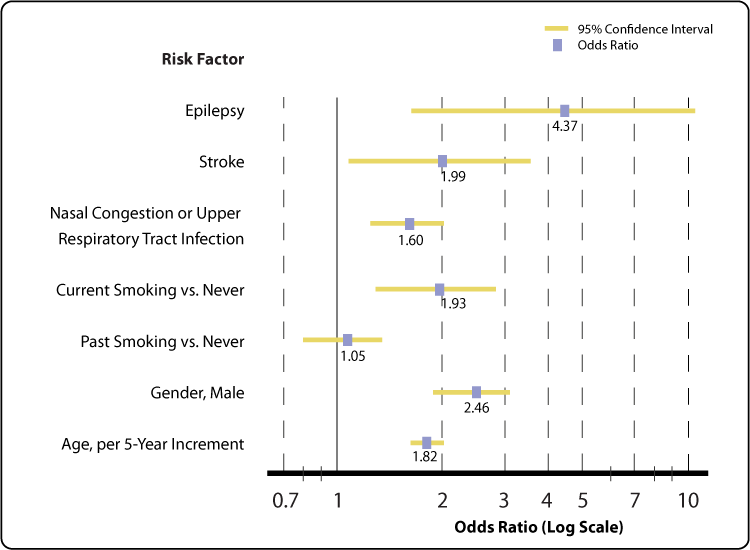


Selected Risk Factors For Smell Impairment Nidcd



Odds Ratios And Risk Ratios Youtube



Attributable Risk And Odds Ratio Online Medical Library
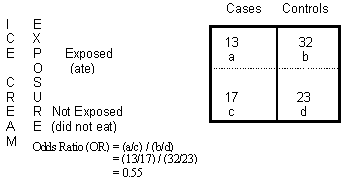


Odds Ratio Calculation And Interpretation Statistics How To
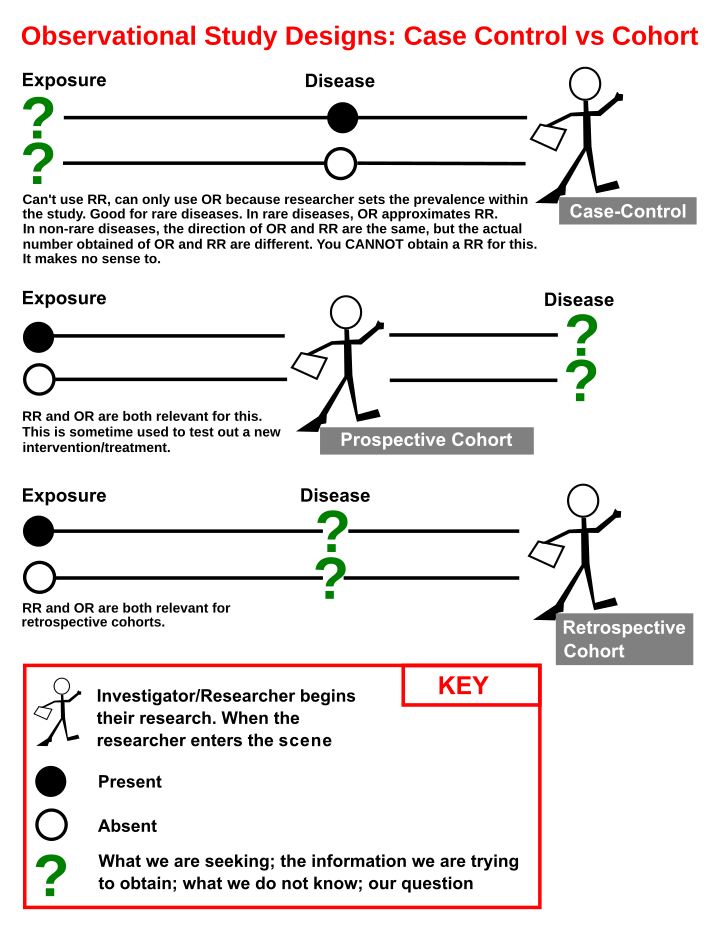


Cohort Statistics Wikiwand



Rde Restorative Dentistry Endodontics
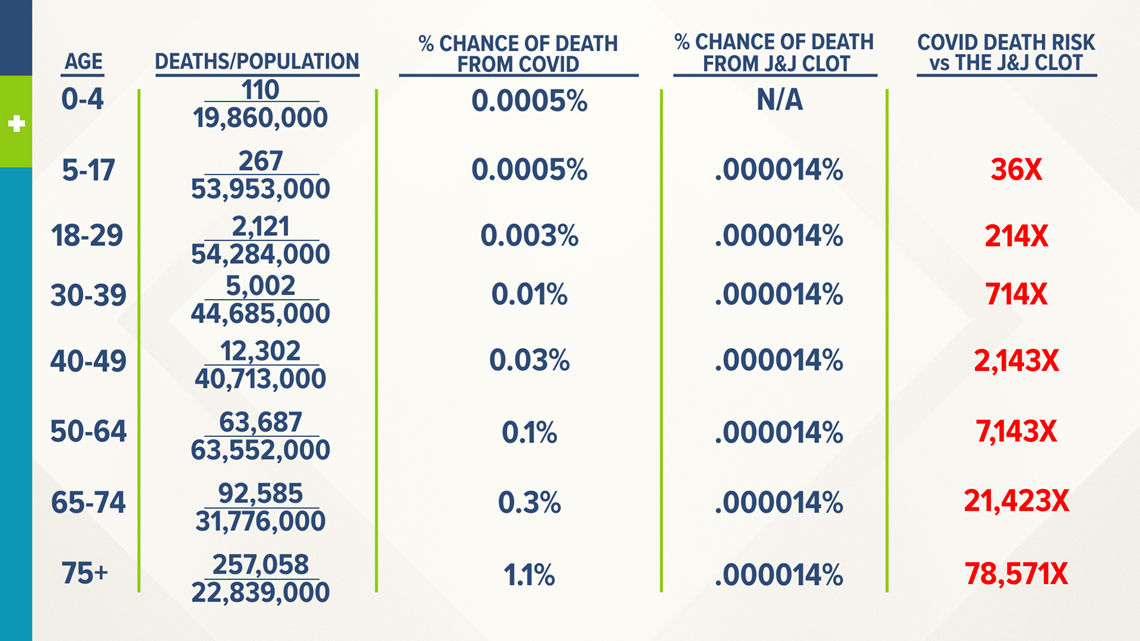


The Odds Of Dying From A J J Vaccine Related Blood Clot Vs Dying From Covid 19 Newscentermaine Com


Introduction To Genetic Epidemiology Lesson 5 Analyzing The Data



How To Calculate Odds Ratio And Relative Risk In Excel Statology



0 件のコメント:
コメントを投稿